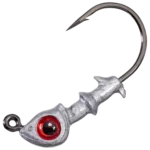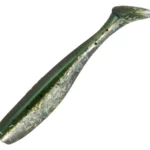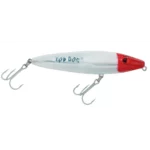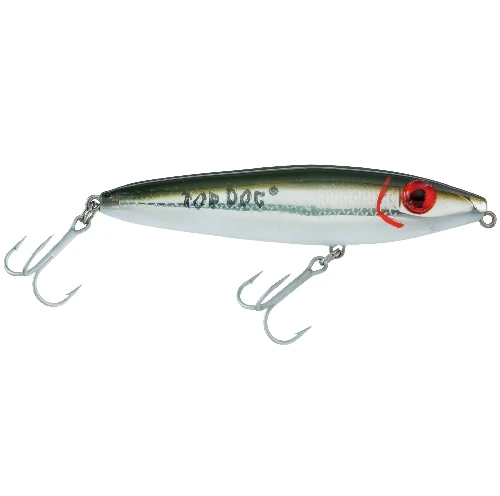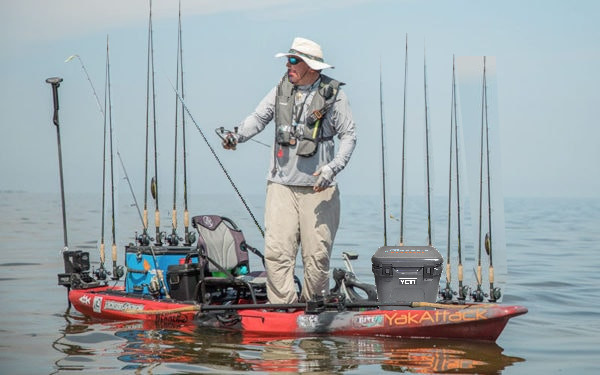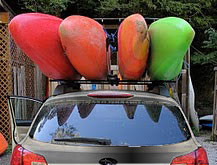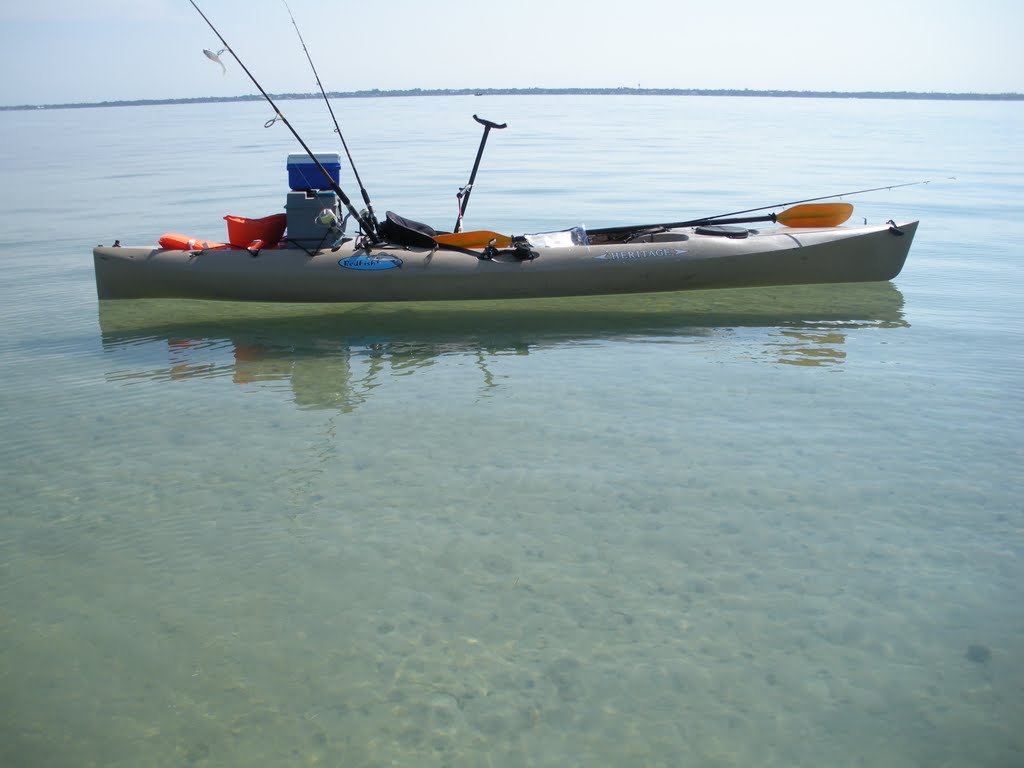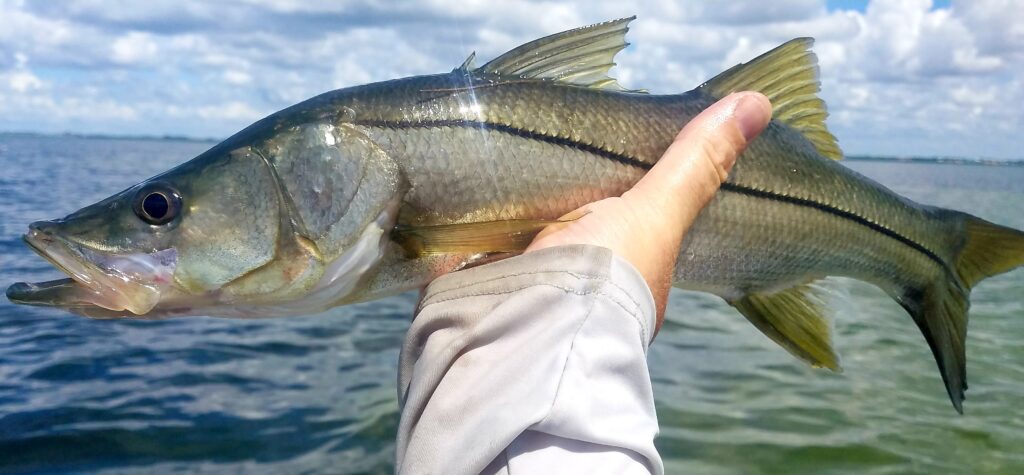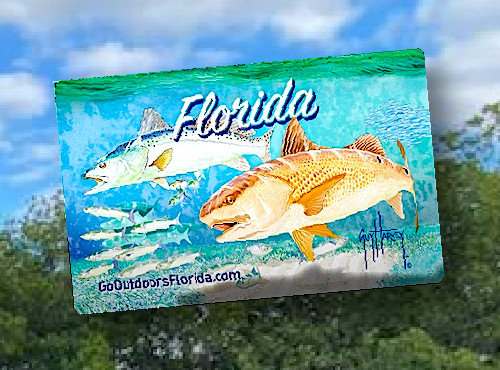Best Lures for Snook
Snook are known to be aggressive and opportunistic predators, so using the right lures can greatly increase your chances of success when targeting them. Here are some popular and effective lure choices for snook fishing:
Jigs: Lead-headed jigs in various weights and colors are a staple for snook fishing. You can use them with soft plastic trailers, such as paddle tails or shrimp imitations. Jigs are versatile and can be worked at different depths and speeds.

Fish Shad Tails with a constant retrieve. Fan cast around structure and current. I like to use light colors on bright days or clear water and dark colors on dark days or dirty water.
I recommend gearing up with at least on light and one dark color with jig head in 1/16oz, 1/8oz, 1/4oz and 3/8oz. Use lighter weights for skinny water, heavy for deeper or moving water. Also, bump it up on the windy days too.
Over half my Snook have been caught on these two colors on the Short Shank.
I use both 3″ and 4″ depending on the size of the bait I see swimming around.
Swimbaits: Soft plastic swimbaits that mimic baitfish are effective for enticing snook. Opt for natural colors like silver, white, or chartreuse. Retrieve the swimbait at a moderate speed, mimicking the swimming action of a wounded fish.
Topwater Plugs: Snook are known for their aggressive topwater strikes, especially during low-light conditions. Walk-the-dog style plugs like Zara Spooks or pencil poppers can be highly effective. Experiment with different retrieves, pauses, and speeds to trigger strikes.

Fish top-waters on flat water with low light conditions (dusk/dawn). Use a constant walk-the-dog retrieve and then introduce some pauses if the bite is slow. Fan cast around structure and current. Or long casts across flats holding bait. Look for oil slicks and scales.. I HIGHLY recommend replacing the treble hooks with single. Not only is it better for the fish, but having a Big Snook flopping around in you kayak with a mouth full of trebles usually ends poorly.
Mullet colors, Bone, and Red & White are my go to colors.
Replacement Hooks
Owner Single Replacement Hook – 1X (size 1)
Twitchbaits/Jerkbaits: These lures imitate injured baitfish and can be worked with a jerking or twitching action. Silver or gold colors often work well, but adjust based on water clarity and the local baitfish colors.
Fish weedless with a weighted “twist lock” hook under mangroves and docks. Use the very smallest amount of weight to get your bait to the fish. Softly twitch and jerk with pauses in the “strike zone” from 0-20ft from structure. This is a finesse bait so take your time and make precise casts and present baits up current letting the bait to naturally flow towards the snook between twitches and jerks.
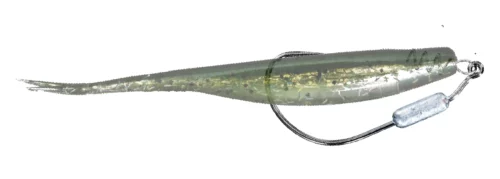
RECOMMENDATIONS:
D.O.A. C.A.L. Jerk Baits – 5-1/2″ in Nite Glow, Rootbeer Chartreuse Tail or Silver Mullet rigged on a Mustad Power Lock Plus UltraPoint Weighted Hooks – Black Nickel – 1/16 oz. – #3/0
Tip: Bite the paddle tail off a shad style bait for a small jerkbait. Removing the tail reduces the vibration that may spook skittish snook and will twitch and react like a normal jerk bait.
@yakfishin
Shallow-Diving Crankbaits: Snook often inhabit shallow areas near structures. Crankbaits that dive 1 to 4 feet are great for targeting these fish. Choose lures that resemble the local baitfish and retrieve them erratically to mimic a wounded prey.
Live Baits: While not lures, live baits like pilchards, pinfish, or shrimp can be extremely effective for snook. Rig them on a circle hook with a leader and allow them to swim naturally. Fish them near structures or in areas where snook are known to congregate.
Remember, snook can be picky at times, so it’s important to vary your lure presentation, retrieve speeds, and colors until you find what works best on a given day. Also, consider the local conditions, such as water clarity, tide, and time of day, as they can influence the snook’s feeding behavior.
When to use each bait
I like to fish two poles. One pole I ALWAY have a jig head with a shad tail (3″ most of the time). I will fish white on white, white on red 99% of the time and switch colors up if the bite is slow. My second rod starts and ends the day with a top-water. Between that I tie on a weighted weedless jerkbait.
I will fish top water first thing in the morning before the sun become bright or at night once the sun is “starting to set”. If the day is over cast the top water bite can last much longer so take note when the sky is gray. I will fan cast the top-water power fishing as I drift around high percentage spots. If the bite is slow I will mix in casts with the paddle tail just to see if there are fish around.
Once the top-water windows dwindles I will use my jig head as a search bait fan casting every little nook and cranny I can find. I will switch over to the jerk bait based on the situation. First is if I need to get up under the mangroves. Big snook move WAY under the mangroves. Most of the time they hide deep into the root systems and just lets the currents bring food to them. The smaller snook will be forced to stay out on the edges more, but the big mamas like to stay deep. So during high tides you will find me skipping weedless rigs as deep as I can into the mangroves. Second, if I spot a fish I go as stealthy as I can because if you can see them they can see you and they will spook real easy. Lastly, I will throw a weedless under docks that I don’t know. Many docks have cross beams or even ropes homeowners tie up to deter people from fishing near their property. So I throw a weedless to avoid losing a jig. Once I know its clear I can fish it however I like.
Best Soft Rubber Baits for Snook, Redfish, and Speckled Trout

